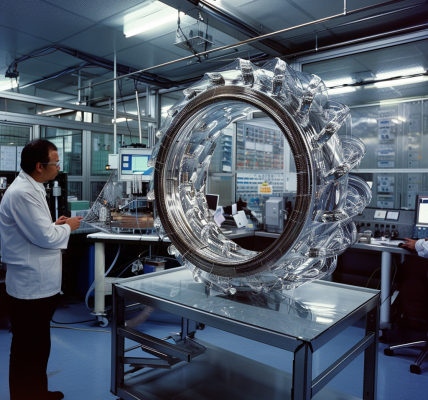NASA has made a significant announcement regarding a space probe proposed by an astronomer from the University of Kansas. On October 3, the space agency revealed that the PRobe far-Infrared Mission for Astrophysics (PRIMA), co-led by KU assistant professor Elisabeth Mills, has advanced to the next stage of consideration for a groundbreaking $1 billion mission aimed at launching in the 2030s.
PRIMA is one of only two probe concepts chosen by NASA for further development and study over the coming year. The initiative is part of NASA’s innovative approach to astrophysics, which includes the creation of a new class of observatories designed to answer some of the most pressing questions in the field over the next decade.
Elisabeth Mills is part of an international team led by Jason Glenn from NASA’s Goddard Space Flight Center, who serves as the principal investigator. The selection of PRIMA marks a pivotal moment in the pursuit of knowledge about the cosmos, particularly concerning the birth of planets and the evolution of galaxies and black holes in the early universe.
As part of this initiative, NASA will provide teams with funding to refine their proposals and develop prototypes. Mills’ team is set to receive $5 million for Phase A of the project, which will unfold over the next year. After this period, NASA will conduct a re-evaluation of the proposals and select one mission to advance further.
The PRIMA mission is specifically designed to detect far-infrared radiation, a type of light that can only be observed from space. This capability is crucial as the last space observatory equipped to capture these longer wavelengths, the Herschel Space Observatory, operated from 2009 until 2013.
Mills emphasized the importance of this research area, stating, “This is one of the most uncharted regions of the electromagnetic spectrum. Lots of big questions in astronomy are just waiting for observations that can only be done at these wavelengths.” One of the major inquiries that PRIMA aims to address is the origins of solar systems similar to our own.
The research will focus on analyzing protoplanetary disks, which are the building blocks of planets, to understand the amount of water necessary for various types of planets to form. This investigation could potentially shed light on the origins of Earth’s water, a long-standing mystery that has yet to be definitively resolved.
Mills further elaborated on the significance of far-infrared wavelengths, describing them as key to unlocking critical insights into the formation and evolution of planetary systems. By studying these wavelengths, researchers hope to gain a deeper understanding of the conditions that lead to the emergence of life-sustaining planets.
The PRIMA mission is positioned to make substantial contributions to our knowledge of the universe, especially regarding the processes that govern the formation of celestial bodies. As teams work diligently over the next year, the scientific community eagerly anticipates the advancements that will arise from this innovative endeavor.
In summary, the selection of KU’s PRIMA for further study by NASA marks a significant step forward in astrophysics research. With a focus on far-infrared radiation and its implications for understanding planetary formation, this mission holds the potential to answer some of the most profound questions about our universe.





